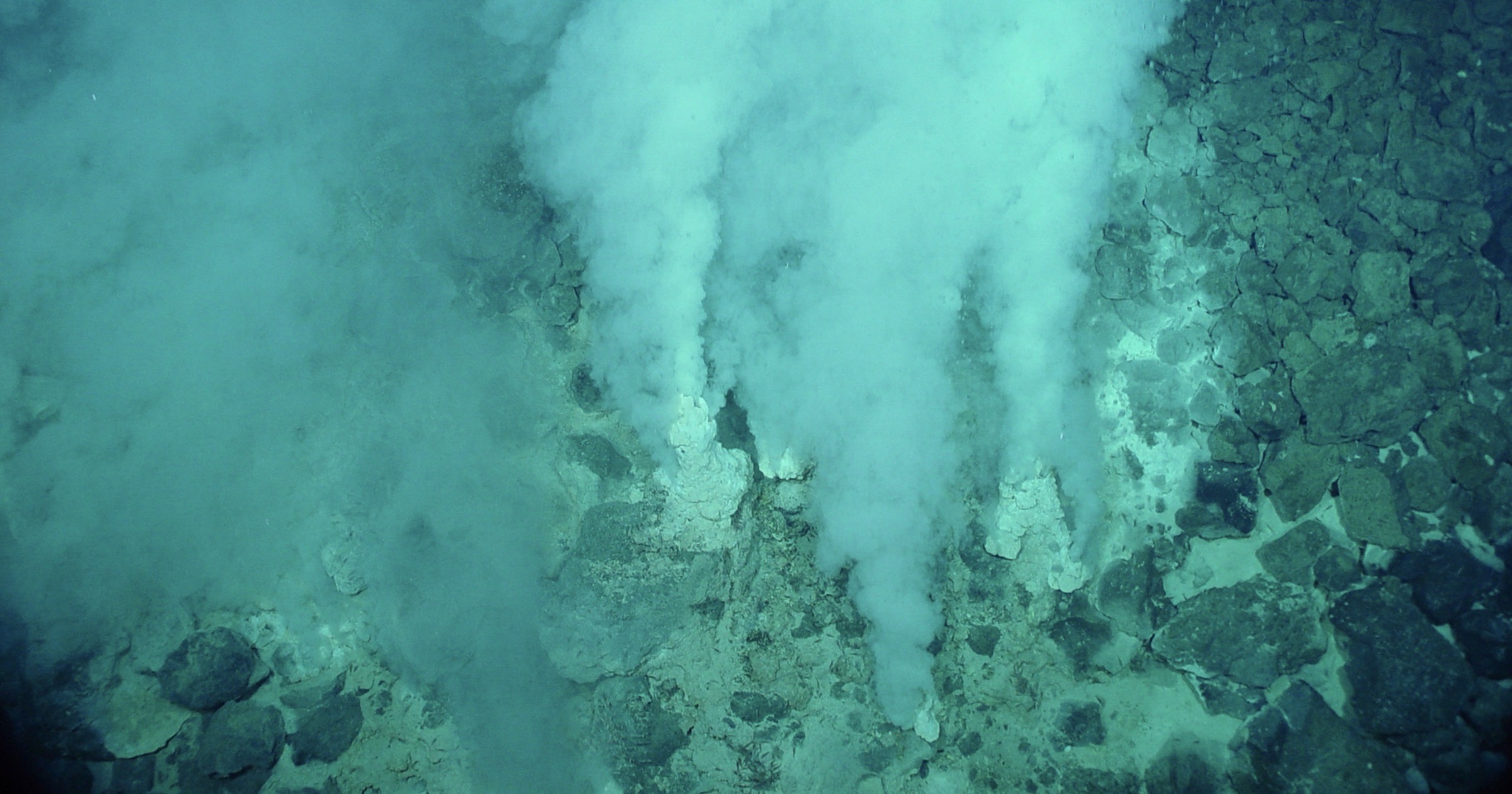 Evolution
Evolution
 Intelligent Design
Intelligent Design
Forming Polymers: A Problem for the Origin of Life

Editor’s note: We are delighted to present a series by Walter Bradley and Casey Luskin on the question, “Did Life First Arise by Purely Natural Means?” This is the fourth entry in the series, a modified excerpt from the recent book The Comprehensive Guide to Science and Faith: Exploring the Ultimate Questions About Life and the Cosmos. Find the full series so far here.
Assume for a moment that there was some way to produce simple organic molecules on the early Earth. Perhaps these molecules did form a primordial soup, or perhaps they arose near some high-energy hydrothermal vent. Either way, origin-of-life theorists must then explain how amino acids or other key organic molecules linked up to form long chains (polymers), thereby forming proteins or RNA through a process called polymerization.
A Popular Model
A problem for the primordial soup version of this model is that it would be at chemical equilibrium, without any free energy for organic monomers to react further.1 Indeed, chemically speaking, the last place you would want to link amino acids or other monomers into chains would be a vast, water-based environment like the primordial soup or in the ocean near a hydrothermal vent. As the U.S. National Academy of Sciences acknowledges, “Two amino acids do not spontaneously join in water. Rather, the opposite reaction is thermodynamically favored.”2 Origin-of-life theorists Stanley Miller and Jeffrey Bada similarly acknowledged that the polymerization of amino acids into peptides “is unfavorable in the presence of liquid water at all temperatures.”3 In other words, water breaks protein chains of monomers back down into amino acids (or other constituents), making it very difficult to produce proteins (or other polymers like RNA) in the primordial soup or underwater near a hydrothermal vent.
The hydrothermal vent model is popular among origin-of-life theorists because it represents a high-energy environment, but this model faces additional problems. Hydrothermal vents tend to be short-lived, lasting perhaps only hundreds of years4 — timescales so short that the origin of life at undersea vents has been said to be “essentially akin to spontaneous generation.”5 It is also difficult to envision how prebiotic chemicals could become concentrated in such a chaotic, unbounded oceanic environment.6
The Biggest Obstacle
But perhaps the biggest obstacle to the origin of life at hydrothermal vents is implied in their name: extremely high temperatures. According to Scientific American, experiments by Miller and Bada on the durability of prebiotic compounds near vents showed that the superheated water would “destroy rather than create complex organic compounds.”7
In the view of Miller and Bada, “organic synthesis would not occur in hydrothermal vent waters,” indicating that vents are not an option for the origin of life because “[a]ny origin-of-life theory that proposes conditions of temperature and time inconsistent with the stability of the compounds involved can be dismissed solely on that basis.”8 Some might reply that certain alkaline thermal vents have lower temperatures,9 but the high pH present near alkaline vents tend to precipitate carbon into carbonate minerals, with very little carbon remaining in the seawater for prebiotic chemical reactions,10 and such a high pH is highly destructive to RNA.11 As one paper put it, “the evolution of RNA is unlikely to have occurred in the vicinity of an alkaline deep-sea hydrothermal vent.”12
Next, “The ‘Clumping’ Problem and the Origin of Life.”
Notes
- Nick Lane, John F. Allen, and William Martin, “How did LUCA make a living? Chemiosmosis in the origin of life,” BioEssays 2 (2010), 271-280.
- Committee on the Limits of Organic Life in Planetary Systems, Committee on the Origins and Evolution of Life, National Research Council, The Limits of Organic Life in Planetary Systems (Washington, DC: National Academy Press, 2007), 60.
- Stanley Miller and Jeffrey Bada, “Submarine hot springs and the origin of life,” Nature 334 (August 18, 1988), 609-611.
- John Horgan, “In the Beginning,” Scientific American 264 (February 1991), 116-125. Horgan is discussing the research of Miller and Bada in Miller and Bada, “Submarine hot springs and the origin of life.”
- Jeffrey L. Bada, “New insights into prebiotic chemistry from Stanley Miller’s spark discharge experiments,” Chemical Society Review 42 (2013), 2186-2196.
- Koichiro Matsuno and Eiichi Imai, “Hydrothermal Vent Origin of Life Models,” Encyclopedia of Astrobiology, eds. Gargaud M. et al. (Berlin, Germany: Springer, 2015), 1162-1166.
- Horgan, “In the Beginning.”
- Miller and Bada, “Submarine hot springs and the origin of life.” See also Stanley L. Miller and Antonio Lazcano, “The Origin of Life Did It Occur at High Temperatures?,” Journal of Molecular Evolution 41 (1995), 689-692.
- Matsuno and Imai, “Hydrothermal Vent Origin of Life Models”; Deborah S. Kelley et al., “An off-axis hydrothermal vent field near the Mid-Atlantic Ridge at 30°N,” Nature 412 (July 12, 2001), 145-149; Deborah S. Kelley et al., “A Serpentinite-Hosted Ecosystem: The Lost City Hydrothermal Field,” Science 307 (March 4, 2005), 1428-1434.
- Norio Kitadai and Shigenori Maruyama, “Origins of building blocks of life: A review,” Geoscience Frontiers 9 (2018), 1117-1153.
- Harold S. Bernhardt and Warren P. Tate, “Primordial soup or vinaigrette: did the RNA world evolve at acidic pH?,” Biology Direct 7 (2012), 4.
- Bernhardt and Tate, “Primordial soup or vinaigrette?”
